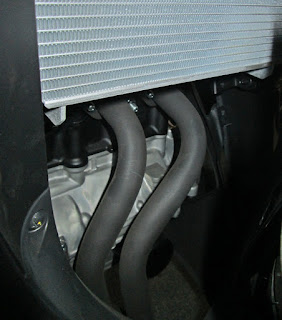Sunday, November 22, 2015
The Four Stroke : Parallel-Twin Engine !

In 1927, a young man in Britain named Edward Turner, working alone in his own shop, designed and built a 350cc single-cylinder motorcycle. The British motorcycle industry took note of this achievement, and he soon landed a job designing bikes. By 1936, he’d worked his way up to General Manager and Chief Designer at Triumph Engineering Co.
In July of 1937, Turner introduced the 500cc Speed Twin, which featured a 27-horsepower parallel-twin engine that formed the basis of most Triumph motorcycle engines well into the 1980s. This engine, and its imitators from companies like BSA and Norton, became the power plant of choice for sporting motorcycles for decades to come.
A parallel-twin engine is a two-cylinder engine with its cylinders placed side-by-side in an upright position.
Because of the design of its crankshaft, along with certain dynamic problems inherent in the parallel-twin design, these engines vibrated much more than a Boxer engine, but they vibrated less than a V-twin. Plus, they were light and powerful for their day. Their compact size enabled engineers to create compact motorcycles that could run circles around the big Harleys and Indians of that era, and their power output nearly equaled that of the big twins, which displaced as much as 1200cc.
Although the parallel twin has long since ceased being the power plant of choice for superbikes, the design still has enough appeal to keep it in production. Modern versions, with redesigned crankshafts and counter balancers to tame vibration, power a variety of mid-sized bikes from manufacturers like Suzuki and Kawasaki. Kawasaki produces parallel twins in both cruiser and sportbike form. Any of these motorcycles make ideal first bikes. I’m especially fond of Kawasaki’s EX500/Ninja 500 series : these are comfortable, good-handling, nimble motorcycles with enough power to keep a rider amused for decades.
The parallel twin seems to be The parallel twin seems to be making a comeback in the hard-core sportbike market, too. Yamaha produces the TDX for the European market with an 850cc parallel-twin engine. I haven’t sampled the bike, but its predecessor, the TDM850, had what may be my all-time-favorite motorcycle engine. That bike is no longer imported into the United States, but if you can find a good used TDM, buy it. Also, the Italian company Laverda recently began importing a line of parallel-twin sportbikes that looks promising.
Subscribe to:
Post Comments (Atom)

No comments:
Post a Comment